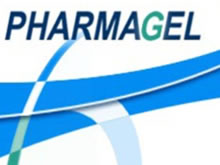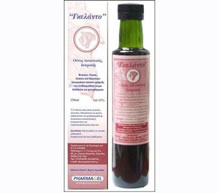
Λεξικό .. Airway inflammation and airway hyperresponsiveness in asthma
Airway inflammation and airway hyperresponsiveness in asthma
Airway inflammation is now recognized as a major pathological feature in asthma. In occupational asthma inflammation may result from agents acting as allergens, chemical sensitisers or simple irritants. Others may have direct pharmacological action. Early treatment with anti-inflammatory drugs may prevent the development of chronic asthma. More knowledge of inflammatory processes in asthma has become available since the introduction of both the bronchoalveolar lavage (BAL) technique and bronchial biopsies of airway mucosa in asthma research. Even in relatively mild asthmatics more inflammatory cells are present in the BAL fluid as compared to the nonasthmatic controls. DeMonchy and coworkers observed that allergen challenge led to an inflammatory response, consisting of both an increase in cell numbers and activity in the BAL, especially during the late asthmatic response. Also in nocturnal asthma it was found that inflammatory cells increased in the BAL during the night.
These inflammatory processes are reflected by changes in airway hyperresponsiveness which can be assessed by inhalation provocation tests with non-allergic substances like methacholine, a "direct" stimulus of the smooth muscle cell and adenosine 5-monosphosphate (AMP) , an "indirect" stimulus. Using these tests it has been observed that after allergen challenge the airway responsiveness to both agents increase immediately after the early response, and not only, as was previously assumed after the late asthmatic response. This suggests that inflammatory processes already occur just after the early asthmatic response. In a study performed in patients with increased nocturnal airway obstruction it was observed that the circadian variation in AMP airway hyperresponsiveness, in contrast to methacholine is significantly related to the circadian variation in peak flow values. This suggests that mediator release by inflammatory cells rather than smooth muscle changes contribute to nocturnal asthma.
References
Chan-Yeung and Lam 1990. Clin. Exp. Allergy 20:1-5.Koeter, G.H.: Airway inflammation and airway hyperresponsiveness in asthma. Airway inflammation. Symposium at the XVth EAACI Congress, Paris, May 11, 1992.
Γκέλης Ν.Δ. - Λεξικό Αλλεργίας - Εκδόσεις ΒΕΛΛΕΡOΦΟΝΤΗΣ - Κόρινθος 2013
Gelis Ν.D. - Dictionary of Allergies - VELLEROFONTIS Publications - Corinth 2013




